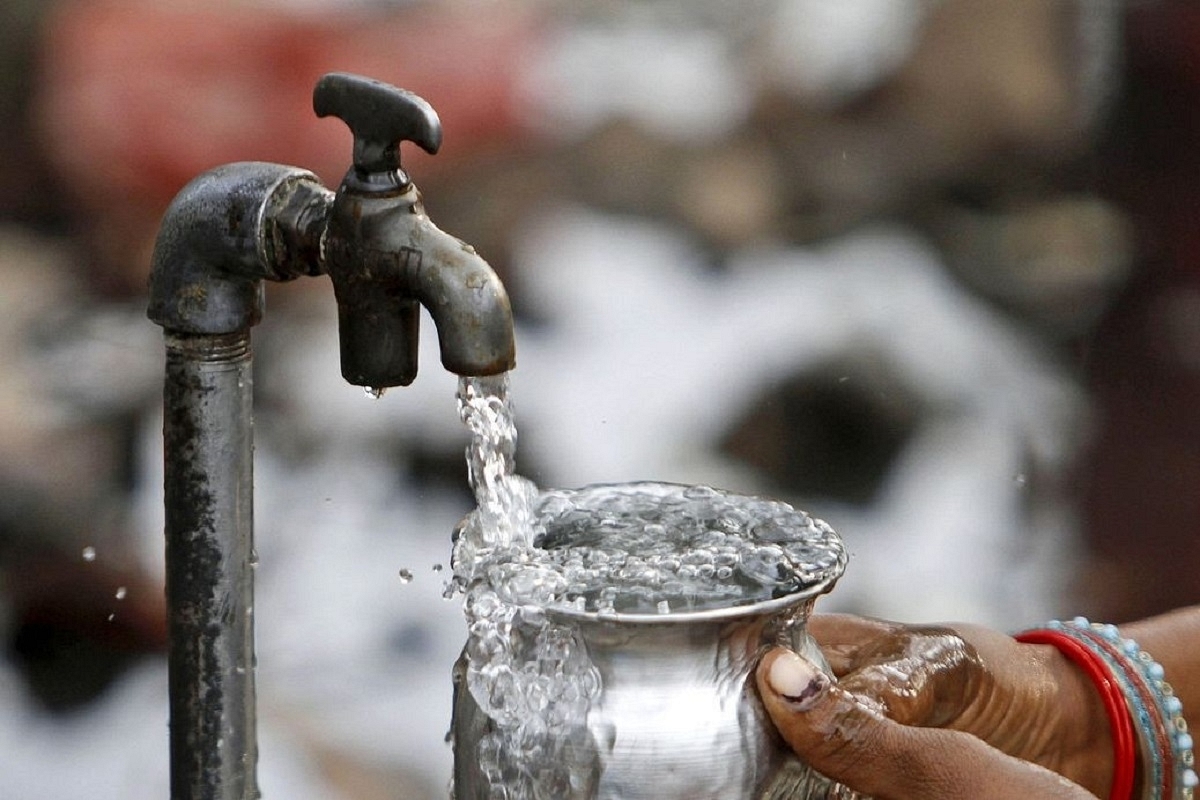Economy
Economic Survey 2023: Better Social Infrastructure For Rural India

Piped Water Supply (Representative image)
Since 2014, the government has been undertaking several reforms to better the social infrastructure in rural India.
This included subsidised housing for all in which over 2 crore houses were constructed under the Pradhan Mantri Awas Yojana-Gramin.
Further, close to 3 crore houses were electrified and 11 crore tap connections were given.
The bettering of the social infrastructure is also reflected in the skill development missions, healthcare initiatives like Ayushman Bharat, insurance schemes, connectivity through all-weather roads, and clean cooking fuel.
Together, this array of initiatives has resulted in an overall improvement in the quality of life for people in villages.
The Economic Survey 2023 documents several such indicators.
One of the biggest success stories has been the penetration of the Jal Jeevan Mission.
Announced in the budget of 2019, the programme has grown leaps and bounds since its inception. The Jal Jeevan Mission was important for several reasons.
As per the Composite Water Resources Management Index by the NITI Aayog, before 2019, a number of states in North East and the Himalayan region were without adequate infrastructure for drinking water.
In Meghalaya, merely 17 per cent of the rural habitations had access to drinking water supply.
In Sikkim, the percentage was 35 while in Nagaland and Tripura it was 46 and 52 respectively.
In Uttarakhand, one of the hotspots for religious tourism, 56 per cent of the rural habitations had access to drinking water. In Assam, it was 60 per cent.
In states like Gujarat, Madhya Pradesh, Goa, Uttar Pradesh, Jharkhand, Haryana, Chhattisgarh and Tamil Nadu more than 90 per cent of the rural habitations had access to drinking water.
Kerala at 22 per cent, Karnataka at 33 per cent, Telangana at 55 per cent, Bihar at 61 per cent, and Punjab at 67 per cent were the states that need urgent attention with respect to drinking water supply.
Thus, before the Jal Jeevan Mission, only 49 per cent of the rural population had access to safe drinking water. Thus, a population more than that of the United States was without clean drinking water in India.
A note must also be made of the direct benefit transfer (DBT) programme, which has transformed the implementation of rural welfare.
For instance, before 2015, more than 650 million people in India were without bank accounts. Therefore, for the transfer of payments under the MGNREGS and several other welfare schemes, the government had to rely on panchayat bank accounts.
Further, the workers were required to collect their wages from the gram panchayat office in cash.
This resulted in two problems. One, monetary leakages, and two, the connectivity.
As per the Reserve Bank of India (RBI), in March 2014, there were 115,350 banking outlets across villages in India. The problem of delayed payments along with that of geography further alienated many more rural workers from the MGNREGS.
With the JAM (Jan Dhan-Aadhaar-Mobile) trinity seeded in their daily work routine, not only have the rural workers found themselves with greater access to public welfare schemes, healthcare, and other formal financial instruments, but they also now play a far greater role in India’s pursuit of becoming a $5 trillion economy.
Introducing ElectionsHQ + 50 Ground Reports Project
The 2024 elections might seem easy to guess, but there are some important questions that shouldn't be missed.
Do freebies still sway voters? Do people prioritise infrastructure when voting? How will Punjab vote?
The answers to these questions provide great insights into where we, as a country, are headed in the years to come.
Swarajya is starting a project with an aim to do 50 solid ground stories and a smart commentary service on WhatsApp, a one-of-a-kind. We'd love your support during this election season.
Click below to contribute.
Latest